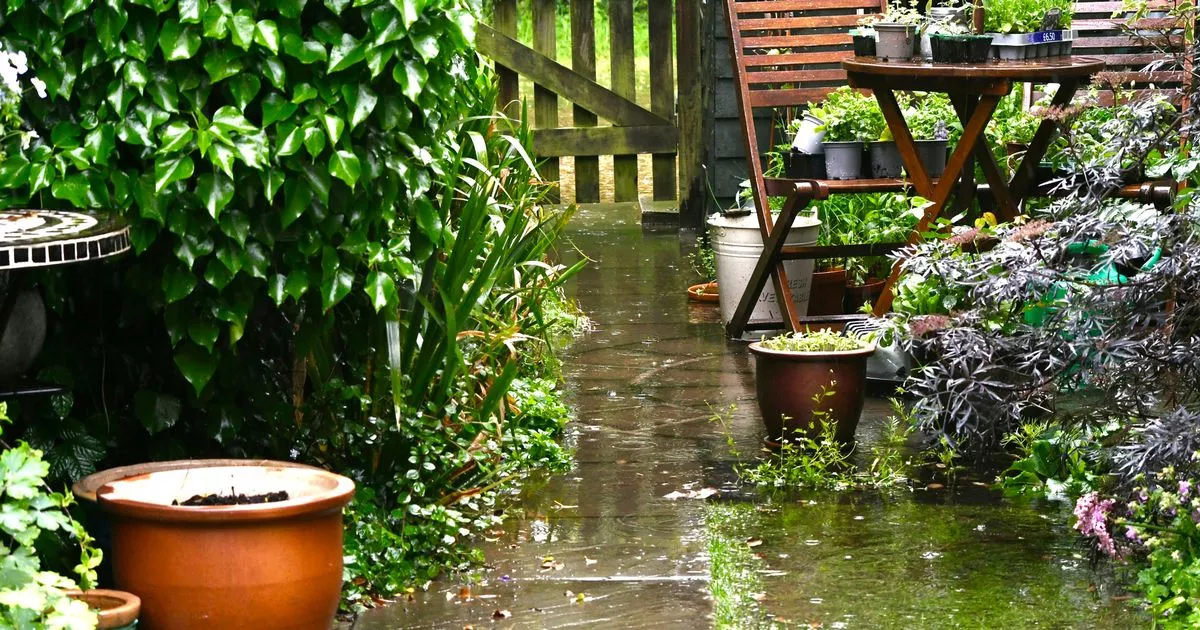Many people only have a small garden but there are ways you can make it appear to be bigger
Many people enjoy relaxing in their garden – especially as the lighter days arrive along with hopefully warmer weather. But often the outdoor space can be limited.
With some gardens being just a few feet across or even just a small yard it can seem your gardening options are limited . But design expert Ivana Agustina says there are ways of making your smaller garden feel much bigger.
She says: “Small gardens don’t have to feel cramped or limiting.” Agustina, head of project management at landscape design service ShrubHub, has compiled a collection of clever visual tricks that can make even the tiniest garden appear significantly larger.
These techniques rely on optical illusions and smart design principles rather than expensive renovations or expansions. She explained: “The psychology behind making small spaces feel larger is fascinating. Our perception of space is influenced more by how we experience it rather than by actual square footage.
“During my career designing hundreds of compact gardens, I’ve seen modest 200-square-foot spaces transformed to feel twice as large simply through visual tricks. The best part is that these techniques don’t require expensive renovations or expansions – just thoughtful planning and strategic design.”
She added: “A cleverly designed small garden can deliver the same joy and functionality as a much larger space, proving that when it comes to gardens, size isn’t everything. It’s how you use the space that counts.”
Create zones with different functions
Breaking up your garden into distinct areas makes the space feel larger than a single open area. “The human brain perceives multiple small experiences as more substantial than one uniform space,” explains Agustina. “By dividing your garden into zones – perhaps a dining area, a lounge space, and a planting section – visitors mentally ‘travel’ through your garden, making it feel much bigger.”
Try using different materials to mark these zones – gravel for a seating area, decking for dining, and mulch for planting beds. The transitions between these spaces create mental ‘journeys’ that extend the perceived size of your garden.
Use forced perspective with diagonal lines
Diagonal lines trick the eye into perceiving greater depth. “Garden pathways or patio pavers laid at a 45-degree angle create an illusion of expansion,” says Agustina. “This works particularly well in rectangular gardens, where the diagonal lines fight against the boxy boundaries.”
A simple application is to lay a pathway that narrows slightly as it extends away from the house, artificially extending the perceived distance.
Draw the eye upward with vertical gardens
When ground space is limited, go up. “Vertical gardening is both practical and visually expanding,” Agustina says. “By drawing the eye upward with wall-mounted planters, trellises with climbing plants, or tall, narrow planters, you create height that makes the garden feel more spacious.”
This technique works well against fences or walls, where climbing plants like jasmine or clematis can transform boundaries into living green features while pulling attention away from the garden’s limited footprint.
Strategic colour placement
Colours create powerful spatial illusions. “Place brighter colours like yellows and oranges near the entrance of your garden, transitioning to cooler blues and purples at the far end,” advises Agustina. “Cool colours visually recede, making that section of the garden seem farther away than it actually is.”
This principle applies to plants, pots, and garden accessories alike. A bright yellow planter near your door and lavender or blue hydrangeas at the garden’s end can significantly extend its perceived depth.
Use mirrors strategically
Mirrors have long been used to double the perceived size of interior spaces, and they work wonderfully outdoors too. “An outdoor-rated mirror placed at the end of a garden reflects plantings and sky, effectively doubling the visual space,” Agustina explains. “For safety, choose shatterproof acrylic mirrors designed for outdoor use.”
For maximum effect, position mirrors where they’ll reflect greenery or interesting garden features rather than blank walls or fences.
Scale down furniture and features
Proportional design makes a significant difference in small spaces. “Oversized furniture in a tiny garden is like putting a king-sized bed in a small bedroom – it overwhelms the space,” says Agustina. “Choose appropriately scaled furniture and features that leave breathing room around them.”
This principle extends to planting choices too. Instead of one large specimen tree, consider a dwarf variety or a multi-stemmed small tree that provides visual interest without dominating the space.
Create mystery with partial screening
“Human curiosity is a powerful tool in garden design,” Agustina notes. “When we can’t see everything at once, we perceive there’s more to discover.” Try partially screening areas with tall grasses, bamboo, or lattice panels that hint at spaces beyond without fully revealing them.
This technique creates a sense of journey and exploration, making visitors feel they’re experiencing a series of garden rooms rather than a single small plot.


